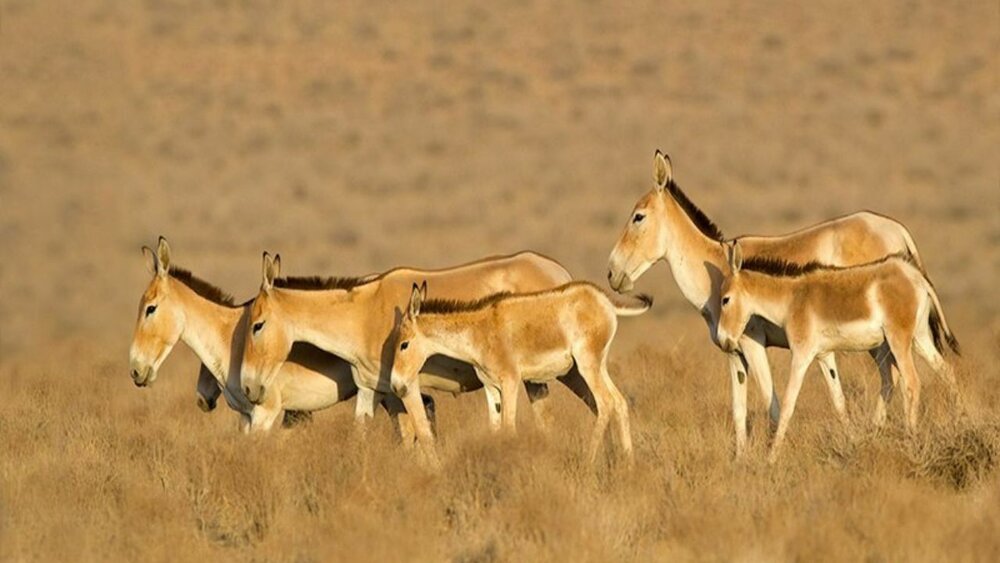Reproduction site: Persian zebras at lesser risk of extinction

TEHRAN – The central province of Yazd is one of the areas where several sites for the protection and reproduction of some wildlife species established, including the endangered Persian zebra.
The Persian onager, also called Persian zebra, is a subspecies of onager native to Iran. It is listed as Endangered, with no more than 600 individuals left in the wild and only 30 individuals living within North American institutions.
Persian onagers are known to inhabit mountain steppes, semidesert, or desert plains. They are usually found in desert steppes. Their largest population is found in Khar Turan National Park.
The Persian onager is listed as endangered by IUCN Red List, as it is close to extinction. Currently, poaching for meat and hides, competition with livestock, and drought are the greatest threats to this species. Asiatic zebras are highly and legally protected; hunting them is forbidden.
Persian zebra breeding site in Abarkooh is the third site in Yazd province, which was established in 2010 with an area of about 200 hectares, and started activity with four zebras transferred from the Gorab breeding center of Mehriz city.
In recent years, due to the measures taken by the Department of Environment (DOE) to conserve Persian zebra, and the population of this species in Abarkooh site has had a favorable growth.
Nayereh Poormolaei, the provincial DOE chief said that "According to the organization's policies in order to manage the population of zebra through breeding, in 2010, 15 zebras were transferred from this site to Siahkooh National Park and after a while released to their natural habitat, and also this year, 9 other zebras were transferred from this site to the Mehriz breeding site."
Currently, this site is in a good condition with five zebras, and it is planned to carry out a project to release and re-introduce the population of this species in the habitats of Abarkooh city in the future after the conditions are provided, she noted.
This protective action is very complex and requires study before introduction, special measures at the time of introduction and a long, round-the-clock process after re-introduction, she highlighted.
She went on to say that considering that the plains of Siahkooh National Park in Ardakan city have hosted a large population of zebras in the past, an attempt was made to release them in their historical habitats.
Wildlife transfer projects face high risks during transportation and release, but there is sufficient knowledge, tools, and experience in this field in Yazd province and so far there have been no casualties during species transfer, she stated.
For the first time, the re-introduction of zebras to the northern habitats in Yazd province was carried out with complete success, and after a year, the results of monitoring showed that the adaptation process has been satisfactory, she emphasized.
Noting that the region has a good capacity to maintain and breed native animal species, she said that due to the climatic conditions of the region and the supply of food, zebras are able to reproduce every year.
To preserve the existing biodiversity over the wide geographic expanse of Iran, four types of areas have been designated for preservation and protection, including, national parks, wildlife refuges, protected areas, and natural national monuments. In 1997, the Department of the Environment (DOE) held supervision over 7,563,983 hectares of such areas. By the year 2003, the size of the DOE supervised areas reached 11,791,788.225 hectares.
FB/MG

Leave a Comment